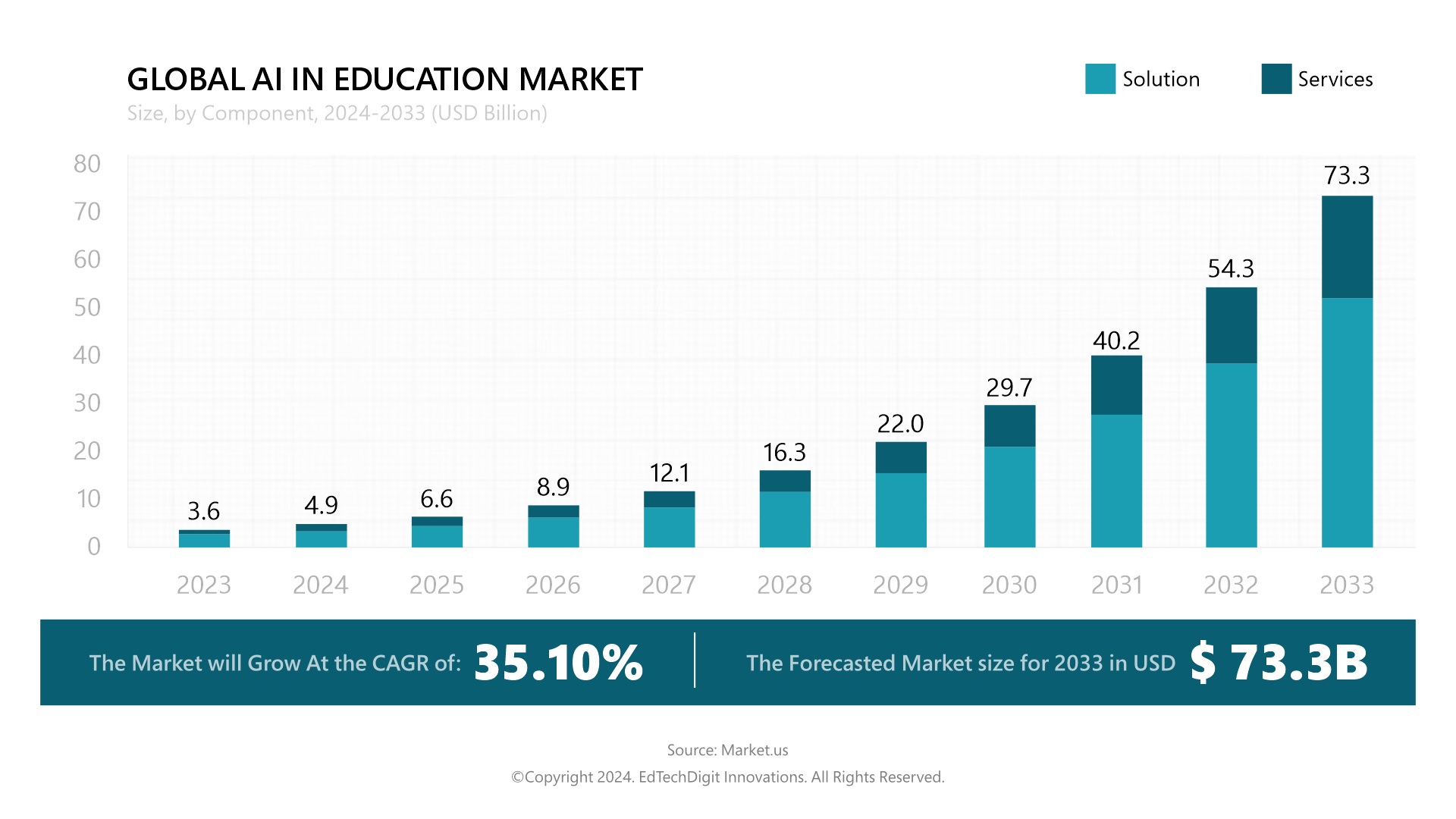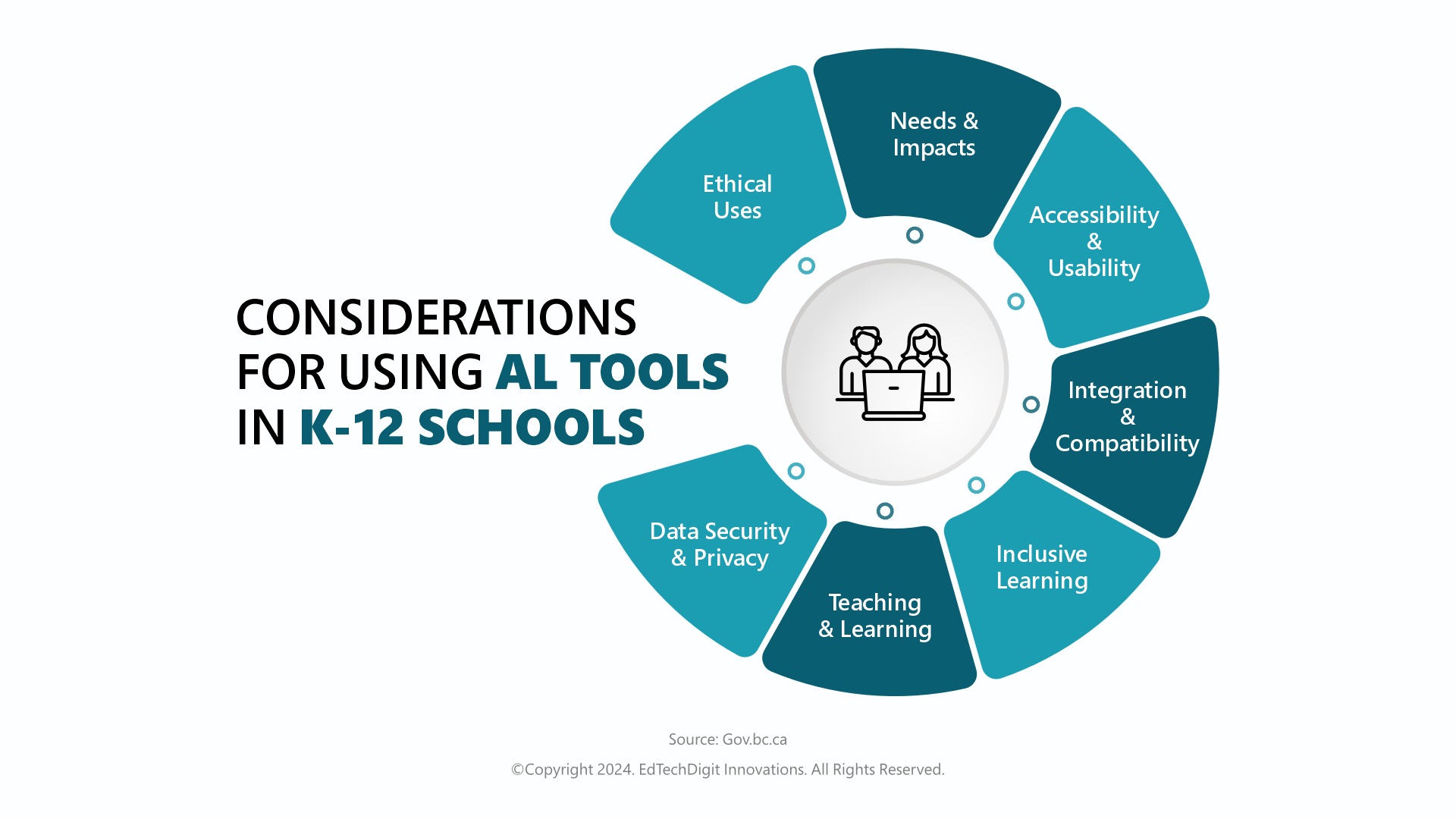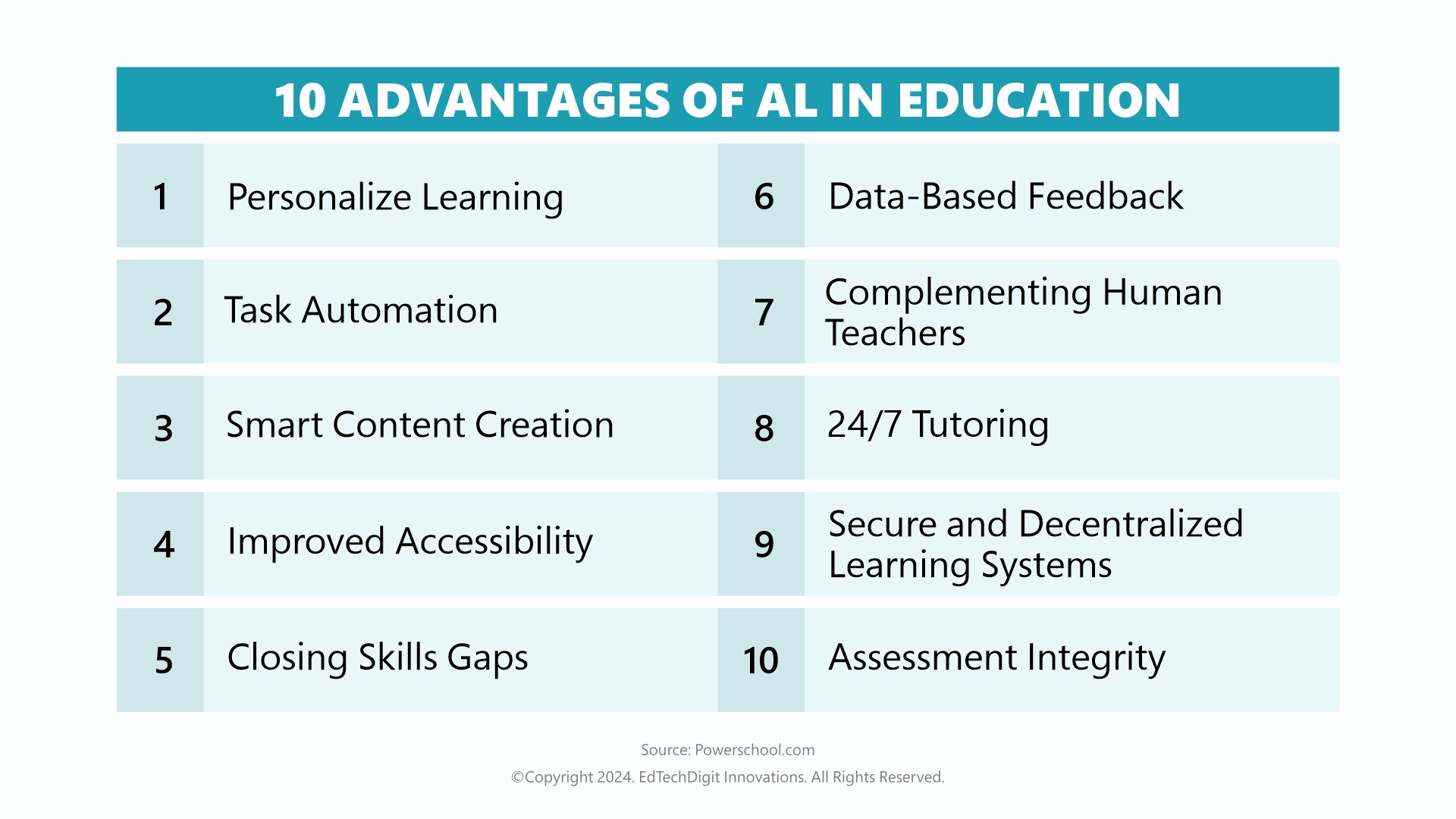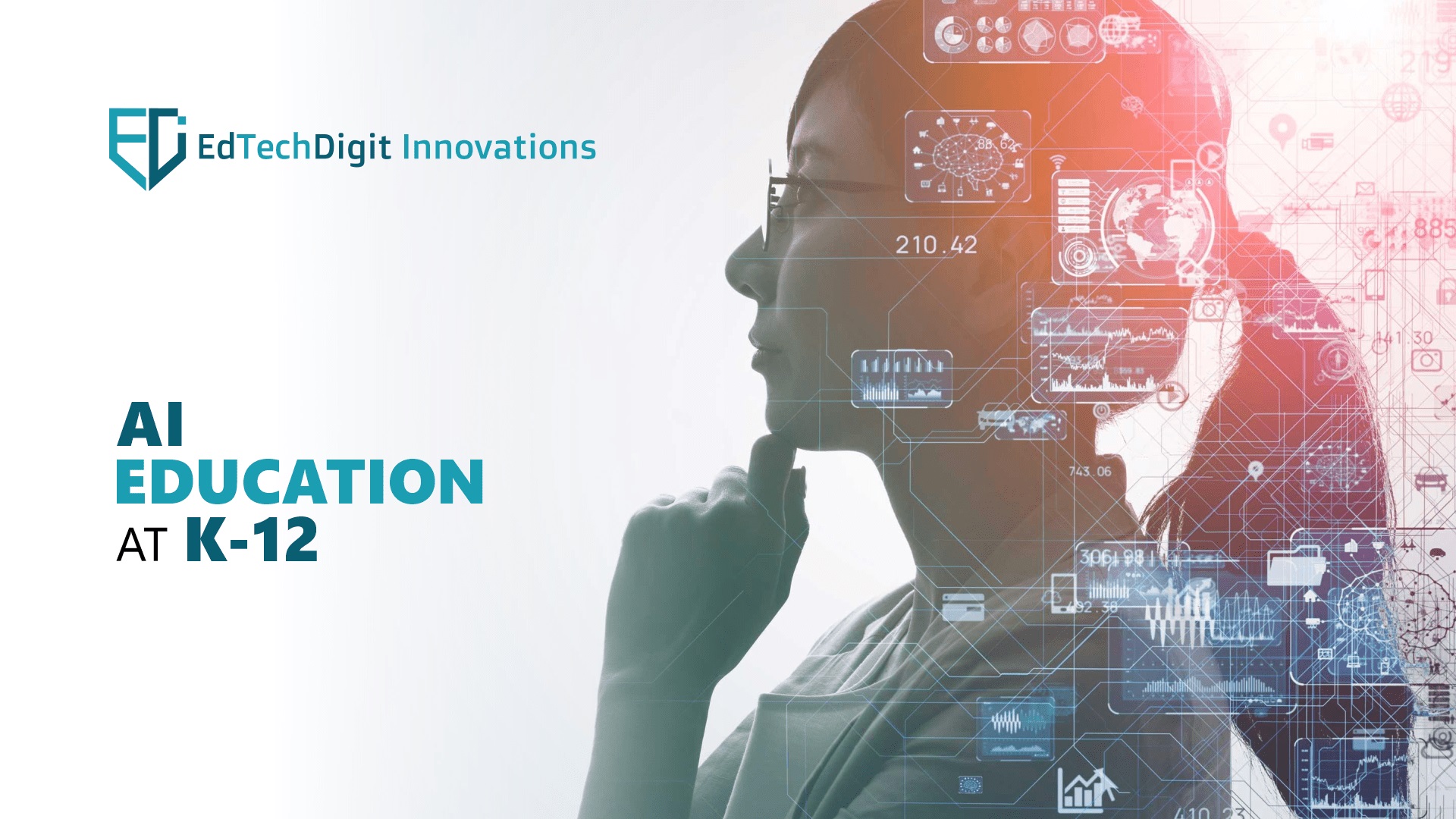Artificial intelligence literacy is all it takes to ramp up the education sector. However, it is not new anymore! The K-12 education sector has gained a tremendous fleet with the advent of artificial intelligence over the years. Understanding the context of AI education is critical for the equitable growth of diverse sectors.

Looking at the consistent progression that artificial intelligence technology brings to the education sector is astounding. Market.US stresses at a staggering 35% growth rate year-on-year with the year 2025 reaching the volume of USD 6.6 billion. Whether you think of the service or solutions for the education industry; AI has got a tremendous role to play.
AI has become ubiquitous in our society, accelerated by the speed of the development of machine learning algorithms and voice and facial recognition technologies used in our everyday lives. Furthermore, AI-enhanced technologies and tools are no strangers in the field of education. It is more evident that it is important to prepare K-12 students for their future professions as well as citizens capable of understanding and utilizing AI-enhanced technologies in the future.
Young learners have already been growing up with AI assistants or AI-assisted smart devices in their homes (Google-enhanced smart speakers, devices equipped with Siri or Alexa). Rapid development of voice and facial recognition technologies, and machine learning algorithms, which will continue to evolve, have started to transform our everyday lives. No doubt, AI has become ubiquitous in today’s global society.

The above image reflects upon the core considerations that one must dig into to utilize and strategically deploy smart AI tools in K-12 education and schools. A recent discussion paper commissioned by UNESCO identifies five pillars to guide AI education at K-12:
- Randomness renders acceptance of uncertainty or the ability to live in a world where models cease to be deterministic.
- Coding and computational thinking skills allow individuals to create with code and to solve problems through algorithms.
- Data awareness namely the capacity to build, manipulate, and visualize large amounts of data.
- Critical thinking as adapted to an increasingly digital society and finally a series of questions amounting to understanding our humanity given the changes AI introduces.
- Post-AI humanism reconsidering key concepts such as intelligence, experience, creativity, and the truth.
AI Education for K-12
|
Key Enablers |
Challenges |
|
|
AI in K-12 Education- Benefits

The above picture is a clear testament to the astounding benefits that can be yielded from artificial intelligence technology for smarter K-12 education in schools. From offering personalized learning experiences to closing the gap with inclusive education systems; AI technology has surpassed all parameters of excellence while deploying the most in-trend AI tools and tactics to empower diverse learners and facilitators alike.
Final Words:
Educational programs are aligned with AI technology in such a way that it empowers the learners as well as strengthens the core facilitating capabilities of the trainers. Improved learning outcomes with end-to-end student support; streamlining student assessment with lab validation access, auto-generate certification reports, and a transparent billing system, are some of the many perks that can be leveraged with every AI tech deployment.
AI technological tools and content for learning from possibly pre-kindergarten to post-secondary students are expanding at a staggering rate worldwide. However, the degree and types of AI integration in society vary from country to country, or culture to culture. It introduced how AI has been integrated into and influenced our lives, and how the issues around introducing AI in K-12 education in various countries have been addressed. Furthermore, how the integration of AI literacy in education is lagging in many developed countries such as Japan, which has just laid out its computer science education. The aim is to introduce K-16 education in Japan (yes, you read that right!). Hence, it is important to create culturally responsive AI literacy using the approach to incorporating culturally responsive approaches in a well-developed and field-tested AI-Ethics curriculum. This growth from K-12 to K-16 shall take some time worldwide to gain traction. This is where we as the tech facilitators and student fraternity must take the initiative to engage and evolve with the recent advancements’ hereafter!

